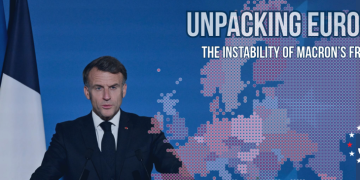Introduction
In the second quarter of 2024, India emerged as a standout in the global investment landscape. Foreign institutional investors (FIIs) poured a record-breaking $23.5 billion into Indian equities, setting a new quarterly high. The rally was supported by resilient corporate earnings, political stability ahead of the general election, and optimistic GDP growth projections north of 6.5%. However, this bullish sentiment did not spill over into the broader emerging markets space. In a striking contrast, U.S.-listed emerging markets ETFs saw $1.5 billion in net outflows during the same period, with many investors trimming exposure to Latin America, Southeast Asia, and even China-linked assets. This divergence raises a compelling question for global allocators: Why didn’t India’s equity inflow momentum ignite a broader risk-on move in emerging market instruments, especially those tracked via American ETFs?
India’s Inflows: A Story of Local Strength and Targeted Confidence
India’s equity market inflow surge in Q2 2024 can be largely attributed to strong domestic macroeconomic fundamentals and policy clarity. The Reserve Bank of India (RBI) maintained a neutral-to-accommodative policy stance, supporting liquidity without overheating inflation expectations. Manufacturing PMI remained above 55 throughout the quarter, and services exports continued to climb despite global slowdown fears.
Global investment banks like Goldman Sachs and Citi revised their overweight stance on Indian equities in April, citing robust earnings revisions, healthy corporate balance sheets, and continued digitization-led consumption growth. MSCI also increased India’s weight in its emerging markets index from 14.8% to 15.9% in May, triggering passive inflows.
However, this optimism was highly India-specific. Most of the foreign capital that entered Indian markets was not routed through broad EM ETFs but via direct exposure, country-specific funds, or India-focused mandates. In fact, over 75% of the Q2 inflows came via strategic institutional allocations rather than ETF-based flows. This shows that institutional investors viewed India not as a proxy for EM recovery, but as a distinct growth engine worthy of targeted investment.
US EM ETFs Show Net Outflows Despite South Asia Strength
While India was thriving, U.S.-listed emerging market ETFs faced a different fate. According to Morningstar data, major ETFs like iShares MSCI Emerging Markets ETF (EEM) and Vanguard FTSE Emerging Markets ETF (VWO) recorded net outflows of $1.5 billion in Q2 2024, even as Indian equities were climbing.
There are multiple reasons for this disconnection. First, the composition of major EM ETFs still includes large exposure to Chinese equities—often more than 25%—which remained under pressure due to deflation concerns, weak domestic consumption, and ongoing U.S.-China geopolitical friction. As China dragged down performance, investors pulled out of broader EM products, even as India surged.
Second, concerns over Latin America’s fiscal instability, especially in Argentina and Colombia, led to a regional derisking. Brazil, which had a strong Q1, saw a pullback in Q2 amid fears of political unrest and slower agricultural exports.
Third, currency volatility weighed heavily on sentiment. The U.S. dollar index strengthened in June 2024 following hawkish FOMC minutes, raising concerns about dollar-denominated debt sustainability in EM countries. The Indian rupee, backed by strong FDI and stable reserves, managed to stay relatively flat, while other EM currencies like the Turkish lira and Thai baht faced heavy depreciation. This divergence in currency performance made ETF-wide exposure less appealing compared to direct, rupee-based Indian investments.
Divergence in Market Structure and Investor Behavior
One of the core reasons India’s inflows didn’t translate into broader EM enthusiasm lies in the structural changes in global fund allocation. In recent years, U.S. institutional investors have increasingly favored granular exposure over broad thematic plays. The rise of country-specific ETFs, such as iShares MSCI India ETF (INDA) and WisdomTree India Earnings Fund (EPI), underscores this shift.
Moreover, fund managers are increasingly aware of regional decoupling trends. The old narrative of treating emerging markets as a homogenous block is eroding. India, with its demographic dividend, regulatory reforms, and domestic consumption focus, is viewed as more resilient and internally driven. In contrast, many emerging markets remain highly dependent on commodity cycles, foreign capital, or external demand—making them more vulnerable to global shocks.
Investor risk appetite also played a role. As global yields rose in late Q2, thanks to a delayed but persistent inflation narrative in developed markets, investors became more selective with risk assets. Rather than adding EM beta through ETFs, they chose specific exposures aligned with structural tailwinds—India being a prime example.

Conflicting Expert Perspectives: Local Resilience vs Global Macro Headwinds
Indian investment banks and strategists have largely celebrated the Q2 inflows as a validation of the country’s structural strength. Kotak Institutional Equities, in a June 2024 note, described India’s equity inflow story as “insulated from global monetary turbulence,” attributing this to domestic demand, a widening digital economy, and a surge in retail SIP (Systematic Investment Plan) participation.
On the other hand, U.S.-based fund managers emphasize that EM capital flows are still predominantly macro-driven. BlackRock’s June Global Outlook warned that “EM-wide flows will remain inconsistent until clarity emerges on U.S. rate policy and China’s domestic recovery.” They argue that the India story, while impressive, is not enough to counteract the weight of weak global liquidity and geopolitical concerns.
Independent EM analysts have also highlighted the risk of misreading flows. Some claim the high Indian inflows may partly reflect short-term rotations, where capital is flowing out of underperforming EMs and into outperforming ones, rather than an overall increase in EM appetite.
What Could Reverse This Divergence? Looking Ahead to 2025
As we look toward the second half of 2025, several scenarios may determine whether India’s equity strength can serve as a catalyst for broader EM optimism—or whether the divergence continues.
In a bullish scenario, U.S. inflation moderates, the Fed pivots to rate cuts, and Chinese stimulus begins to deliver meaningful economic traction. This combination could improve sentiment toward EMs more broadly, leading to renewed interest in ETFs like EEM and VWO. In this environment, India would still benefit, but it would do so alongside other EM peers.
In a neutral scenario, global macro headwinds persist but India continues to outperform. ETF flows remain muted, but India-focused strategies keep receiving attention. This scenario supports more fragmentation in EM investing, with fund managers avoiding generalist exposure and instead opting for concentrated plays.
In a bearish scenario, the U.S. dollar strengthens further, risk aversion spikes, and geopolitical tensions in Asia or the Middle East escalate. This could result in both ETF outflows and net selling even in resilient markets like India, especially if local valuations appear stretched.
For investors, a few leading indicators may help anticipate capital flows:
- Net inflows into India-dedicated ETFs vs generic EM ETF flows
- Dollar index trajectory, particularly against EM currencies
- China’s industrial activity and credit impulse data
- Geopolitical stability in key EM regions, especially Latin America and Southeast Asia
The tension between thematic optimism in India and broader EM caution underscores how capital is no longer flowing uniformly across regions. Instead, investors are exercising greater precision in where they deploy funds—a trend likely to persist.
Conclusion
India’s stellar equity inflows in Q2 2024 painted a picture of economic strength and investor confidence. However, this localized optimism failed to translate into broader emerging markets momentum in U.S.-listed ETFs. The reasons range from China drag and currency risk to structural decoupling and active asset allocation. While Indian markets remain a bright spot, the divergence from global EM products reflects a deeper rethinking of how investors approach emerging markets in an era of fragmentation and geopolitical complexity. As 2025 unfolds, the key question will be whether this divergence deepens—or if India’s outperformance can finally reignite enthusiasm for the wider EM universe.































